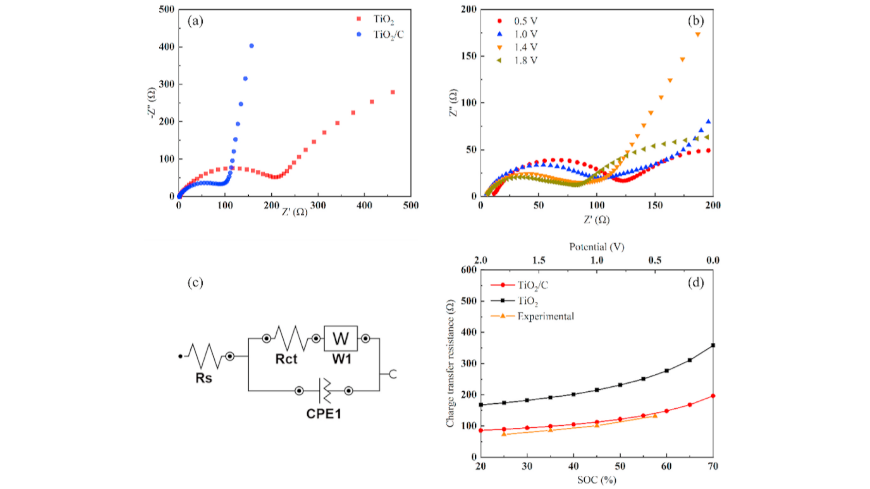New insight into the interface of TiO2/C as nanocomposite electrode for lithium-ion batteries
New Publication in “Journal of Power Sources”
2022/04/11

Authors: Yao Liu, Wen-Bei Yu and Bai-Xiang Xu
Coating the carbon layer onto the surface of TiO2 electrode is seen as an effective strategy to improve the electrochemical performance of lithium-ion batteries, particularly the reduced charge transfer resistance. The reduced charge transfer resistance was attributed to the chemical bonding between the phases. In this paper, however, we show that it is not only the chemical bonding but also the change of the activation energy differences that is responsible. Herein, we fabricate the carbon layer coated TiO2 electrode (TiO2/C) and combine the recently proposed modified Planck-Nernst-Poisson coupled Frumkin-Butler-Volmer (MPNP-FBV) model to address the above-mentioned issues. By combining the experimental results with the electrochemical model, the charge transfer resistance and the interface behaviors are analyzed. The results show that the performance of TiO2/C electrode based cells is determined by the carbon layer/TiO2 interface, while the cells based on TiO2 electrodes are limited by the electrolyte/TiO2 interface. Comparison between the electrochemical simulations and the experimental data indicates that this increased activation energy difference leads to the decrease of the charge transfer resistance. These results imply that activation energy difference across the interfaces can be a critical parameter for designing high performance batteries.



